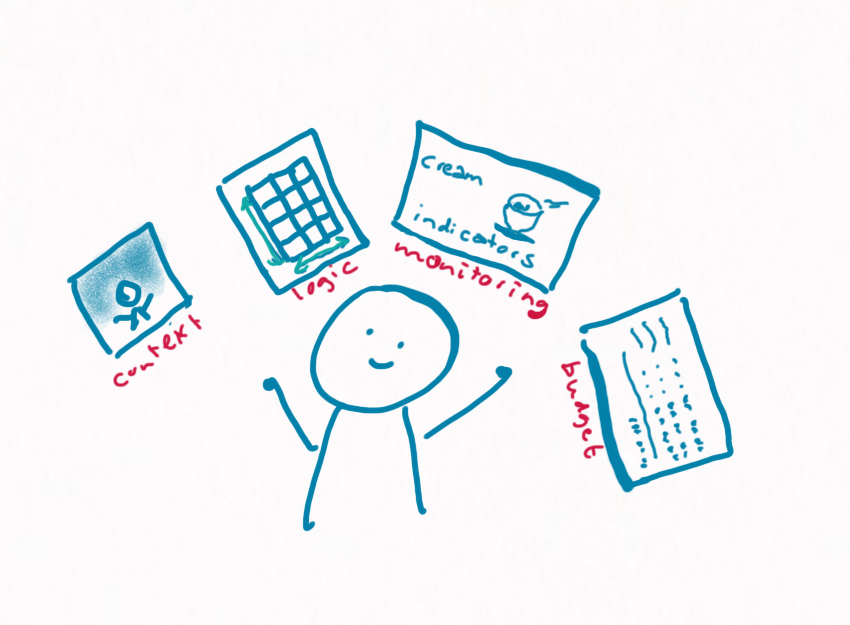If you have applied to more than one donor, you have probably noticed that each donor has their own requirements for submitting project proposals. And their own format. Both for the narrative part and for the budget. But if you look more closely, you can see there are common elements. So what are these? What are common building blocks of a project proposal?
Terminology
Things that are essentially the same may seem different if a donor uses a different term for them. Don’t be sidetracked by words! Look for what the words are asking you to present.
For example
For example, the reason WHY you want to undertake a project may be referred to as the aim, the goal, the objective, the outcome ….. As I said above, look for what the donor is asking you to share.
OK, so the common building blocks then
If you leave the terminology aside, you will see that all donors basically ask four main questions.
What is the relevance of your project?
Donors want to understand why your project is important. What makes it relevant to the community you serve? And: how is it relevant to the donor? How does it relate to the donor’s strategic priorities and policies? This is where you help a donor feel the link to the community you serve, based on their own values, strategies and priorities. If a donor cannot ‘see’ this link, the rest of the proposal has no meaning for them.
How will your activities lead to results and impact?
Donors want to get a clear snapshot of your project. What are you going to do? Which products will you create through your activities? What results will be generated? What impact can that help achieve? The answers to these questions build on each other. There must be some kind of logic, that makes it almost unavoidable that your activities lead to the desired impact.
How will you be monitoring progress?
Donors need to know how you will deal with unexpected developments during project implementation. How do you plan to make sure you stay on track towards achieving the impact you pictured? How will you even know where you are on the road towards that impact? What will you ‘measure’ and how will you do that? Answers to these questions are part of a monitoring framework. Very often, this part of a proposal also includes your approach to learning and evaluation. Designing monitoring, evaluation and learning will help you (and the donor) get a better feel for how realistic your plans actually are.
What are the costs of all of this?
And finally, donors need to know how much investment is needed to make it all happen. Donors also want to see how you will use that investment. What are relative costs of different activities? How much money is used to pay staff or contractors? How much money will go to office costs, and such. Don’t forget that however you shape the budget is also how you will need to account for your expenditures. Just like a budget, such a financial report will tell a story to your donor, too. Make sure it is consistent with the story you put in words – in your proposal and in your report.
My key tips
- Make sure you make a project outline with these four building blocks for any project idea that comes to mind – as soon as it comes to mind. That will make your life so much easier when a call for proposals is opened! And it will greatly help pitching ideas outside of calls, too.
- Spend love & attention on the structure, monitoring plan and budget. Bear in mind that these will guide your implementation. The better they are designed, the smoother your implementation can be.
How I can help
Check out my free Ten Tips to Make Clever Project Budgets: https://www.changingtides.eu/10-tips-to-make-clever-project-budgets/
Here is how I can help you design better projects, including better budgets, to achieve real impact for the community or cause you serve:
- If you would like a structured approach with easy steps and guidance by me to go from a great idea to an effective project design, that has community support and a workable budget, you can join my Course Project Design for nonprofits here: https://www.changingtides.eu/projectdesign
Want to know more and ask questions?
If you want to discuss this more – jump into my nonprofit support community and get input from a wide range of peers and from myself!
Here is how you can join my free nonprofit support community
You can join my free nonprofit support community on the Heartbeat platform here. This group is a safe space for open exchange and discussion on potentially sensitive topics like boards, nonprofit management, fundraising, etc.
You can visit the community via a browser or via an app. Here is the link to download the Heartbeat chat app in the Google Play store.
Want to support me with a cup of coffee?
The seaside always inspires me and helps me think of articles, videos, workshops and courses I can create for you.
If you want to support me without getting a paid workshop, course or review – you can donate me a coffee and speed up my thinking process!
You can support me here: https://ko-fi.com/suzannebakker
